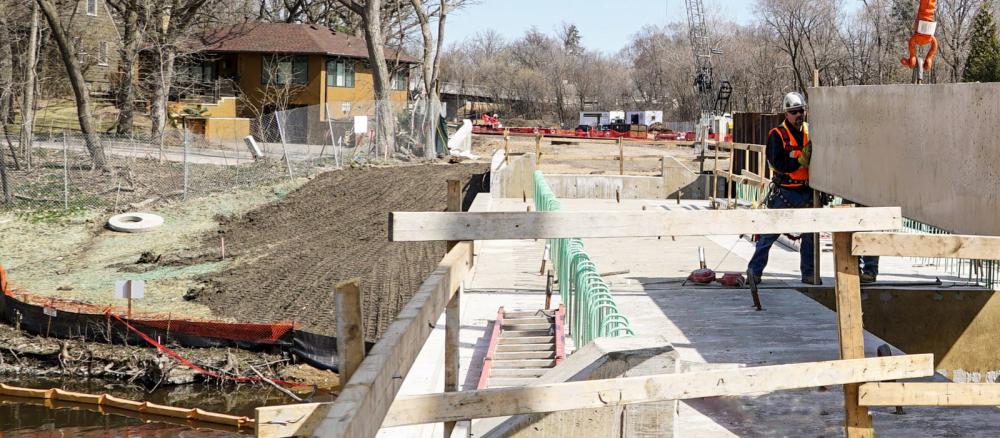A construction project that spans nearly 15 miles and affects about 480 acres faces many challenges when it comes to controlling and managing stormwater runoff. The Southwest Green Line Light Rail Transit Extension (SWLRT) is such a project. So far, the project’s partners — Metropolitan Council, Lunda Construction and C.S. McCrossan — have been meeting those challenges to the benefit of surface waters along the construction corridor.
The construction stormwater permit for this project requires the partners to minimize sediment discharges to area waters by appropriately using best management practices, or BMPs. Examples include inlet protection to prevent sediment from washing down storm drains, perimeter controls to keep sediment from washing offsite, and stabilization to keep slopes or banks from eroding or collapsing. The BMPs must be designed to accommodate expected amount, frequency, intensity, flow and duration of precipitation during construction.
Another important aspect of the permit is, if in the event of a heavy rain storm, or rapid snow and ice melting, any sediment leaves the site, it must be immediately reported to the State Duty Office and the MPCA, and the problem must be cleaned up and fixed. A sediment discharge does not necessarily equate to a permit violation and enforcement, but it does mean that the MPCA will investigate the cause of the discharge and whether it was caused by negligence or non-compliance with the permit. Throughout 2020, the first full year of construction, the SWLRT project accounted for 25% of all construction stormwater reports to the State Duty Officer. However, none of those resulted in any enforcement. In short, this means the Metropolitan Council, Lunda Construction and C.S. McCrossan, have been successfully protecting the land and waters along the construction corridor by applying BMPs, and reporting and fixing problems they’ve encountered along the way.
For their commitment to responsible development through proper stormwater management, the MPCA thanks the SWLRT Extension project partners as they work to improve transit and protect Minnesota’s valuable resources.
